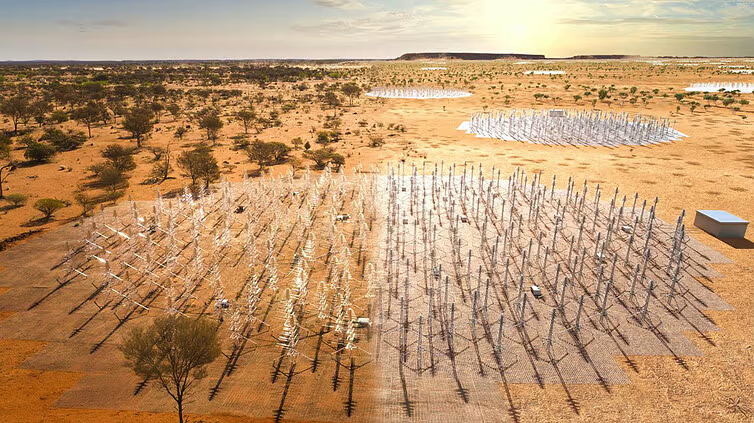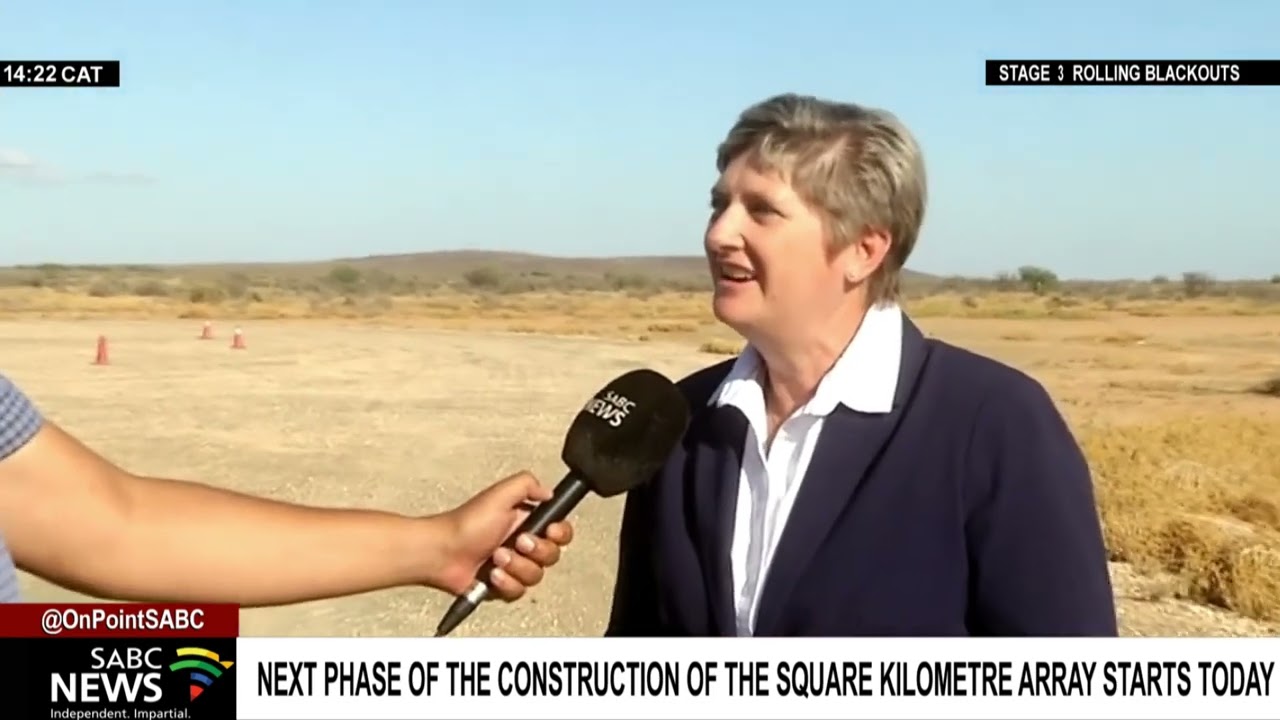Square Kilometer Array - Construction Of The World's Biggest Radio Telescope Starts
The Square Kilometre Array (SKA) will be a gigantic device that combines antennas in Australia with a network of dishes in South Africa to better understand the origins of stars, galaxies, and potential alien life.
Author:Suleman ShahReviewer:Han JuDec 06, 20222 Shares171 Views

On Monday, construction began on Australia's portion of what will ultimately become one of the most powerful radio telescopes in the world: a massive network of antennas in the Outback.
The Square Kilometre Array(SKA) will be a gigantic device that combines antennas in Australia with a network of dishes in South Africa to better understand the origins of stars, galaxies, and potential alien life.
The concept for the telescope dates back to the early 1990s, but delays, financial concerns, and diplomatic jockeying have dogged the project.
What Is Square Kilometre Array?
When it is finished in 2028, the Square Kilometre Array (SKA) will be the biggest radio telescope ever built. The institution will address the most pressing issues in astrophysics and is located in three parts: South Africa, Australia, and the United Kingdom.
It can conduct the most accurate testing of Einstein's theory and look for aliens. In the far-flung Murchison shire of Western Australia and the Karoo of South Africa's Northern Cape, delegates from the eight nations leading the initiative are gathering for ceremonies.
If everything goes according to plan, the first phase of the Square Kilometre Array (SKA) will be a multi-purpose radio telescope operating in the frequency range of 50 MHz to 15 GHz, which will play a significant role in addressing fundamental issues in contemporary astrophysics and cosmology.
The SKA's capabilities will enable for revolutionary experiments to be undertaken in a broad range of research domains, and its survey speed will be one hundred times that of present radio telescopes. After the party is done, the bulldozers will start clearing up the area.
“„This is the moment it becomes real. The first 10 years were about developing the concepts and ideas. The second 10 was spent doing the technologydevelopment. And then the last decade was about detailed design, securing the sites, getting governments to agree to set up a treaty organisation (SKAO) and provide the funds to star.- Prof Phil Diamond, Square Kilometre Array Organisation

Astronomy | Construction of the next phase of the Square Kilometre Array (SKA) starts today
How Does The Telescope Work?
About 131,000 Christmas tree-like dipole antennas will be part of the telescope's original design alongside about 200 parabolic antennas.
It is intended that tens of thousands of square meters of land be used to create an efficient collection area. By doing so, the SKA will be able to study astronomical objects with unprecedented sensitivity and resolution.
The system's operating frequency range will be somewhere around 50 MHz all the way up to 25 GHz. In termsof wavelength, this is on the order of centimeters to meters.
This might make it possible for the telescope to pick up on very weak radio signals from cosmic sources billions of light-years from Earth, such as those released in the first few hundred million years after the Big Bang.
Hydrogen is the most common element in the universe, therefore understanding its whole historywill be one of the SKA's primary goals. Hydrogen should be seen by the telescope even before the first stars formed when massive clouds of the element imploded.
“„The SKA is going to contribute to so many areas of astronomy. One would be these 'fast radio bursts' that have been detected. These things output the equivalent of an entire year's worth of energy from our Sun in just a fraction of a second. And we have no idea what they are. How is that possible? Hopefully the SKA will have an answer.- Dr Shari Breen, Square Kilometre Array Organisation
SKA In Future
Contracts for various purchases will be revealed during related events. Out of a projected total building cost of €2 billion, they will add up to a little about €500m (£430m).
The first important step forward will be taken in 2024 when a network of four Australian dishes and six South African antenna stations will be configured to function as a basic telescope. Once this milestone is reached, the array's complete deployment will begin.
The SKA's effective collection area will be below half a million square meters by the year 2028. The current design allows for expansion indefinitely, potentially to the greatly sought-after area of one square kilometer. It's possible if additional nations join the organization and pay their fair share in funding.
Currently, the organization counts South Africa, Australia, the United Kingdom, China, Italy, the Netherlands, Portugal, and Switzerland among its members. The pact has been approved by the aforementioned nations.
The European Union now includes France, Spain, and most recently Germany on the way to membership. Countries such as Canada, India, Sweden, South Korea, and Japan have all shown interest in joining at some time in the future.
Final Words
More than 131,000 tree-shaped antennae, each roughly 6.5 feet in height will easily detect low-frequency radio wavesbetween 50 and 350 megahertz.
Researchers claim that the SKA-Low will be eight times more sensitive than existing telescopes, with a resolution that is twenty-five percent greater, and the ability to sweep the sky one hundred and thirty-five times more quickly.

Suleman Shah
Author
Suleman Shah is a researcher and freelance writer. As a researcher, he has worked with MNS University of Agriculture, Multan (Pakistan) and Texas A & M University (USA). He regularly writes science articles and blogs for science news website immersse.com and open access publishers OA Publishing London and Scientific Times. He loves to keep himself updated on scientific developments and convert these developments into everyday language to update the readers about the developments in the scientific era. His primary research focus is Plant sciences, and he contributed to this field by publishing his research in scientific journals and presenting his work at many Conferences.
Shah graduated from the University of Agriculture Faisalabad (Pakistan) and started his professional carrier with Jaffer Agro Services and later with the Agriculture Department of the Government of Pakistan. His research interest compelled and attracted him to proceed with his carrier in Plant sciences research. So, he started his Ph.D. in Soil Science at MNS University of Agriculture Multan (Pakistan). Later, he started working as a visiting scholar with Texas A&M University (USA).
Shah’s experience with big Open Excess publishers like Springers, Frontiers, MDPI, etc., testified to his belief in Open Access as a barrier-removing mechanism between researchers and the readers of their research. Shah believes that Open Access is revolutionizing the publication process and benefitting research in all fields.

Han Ju
Reviewer
Hello! I'm Han Ju, the heart behind World Wide Journals. My life is a unique tapestry woven from the threads of news, spirituality, and science, enriched by melodies from my guitar. Raised amidst tales of the ancient and the arcane, I developed a keen eye for the stories that truly matter. Through my work, I seek to bridge the seen with the unseen, marrying the rigor of science with the depth of spirituality.
Each article at World Wide Journals is a piece of this ongoing quest, blending analysis with personal reflection. Whether exploring quantum frontiers or strumming chords under the stars, my aim is to inspire and provoke thought, inviting you into a world where every discovery is a note in the grand symphony of existence.
Welcome aboard this journey of insight and exploration, where curiosity leads and music guides.
Latest Articles
Popular Articles